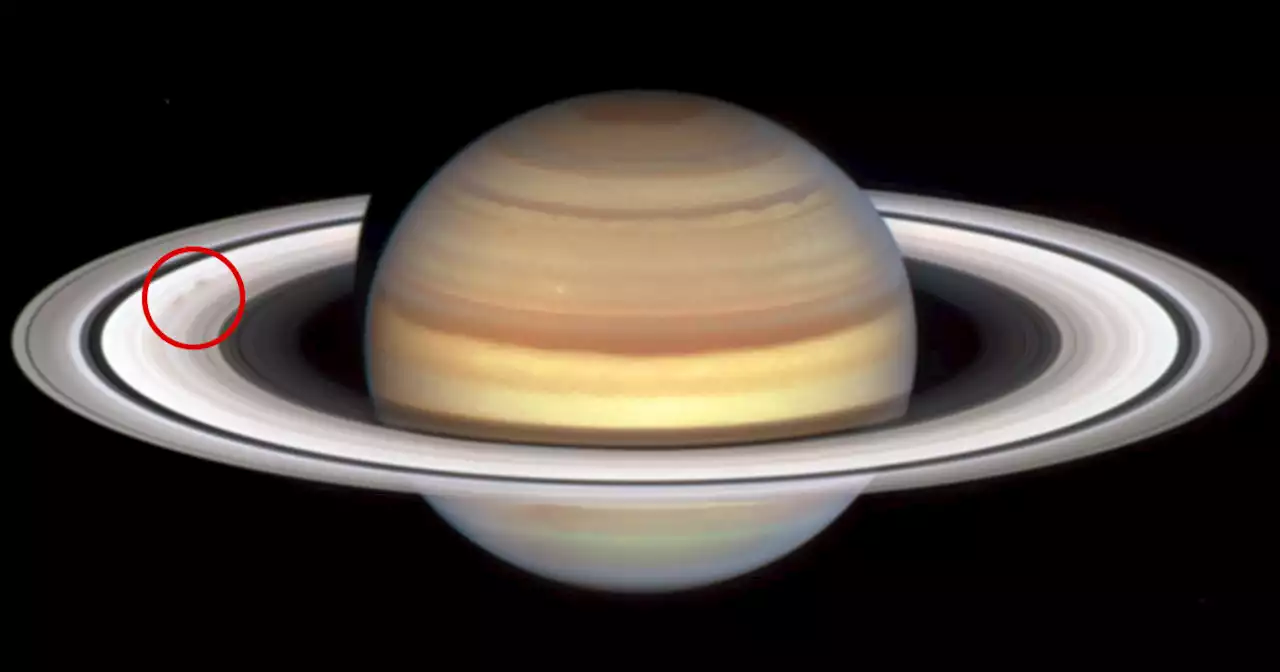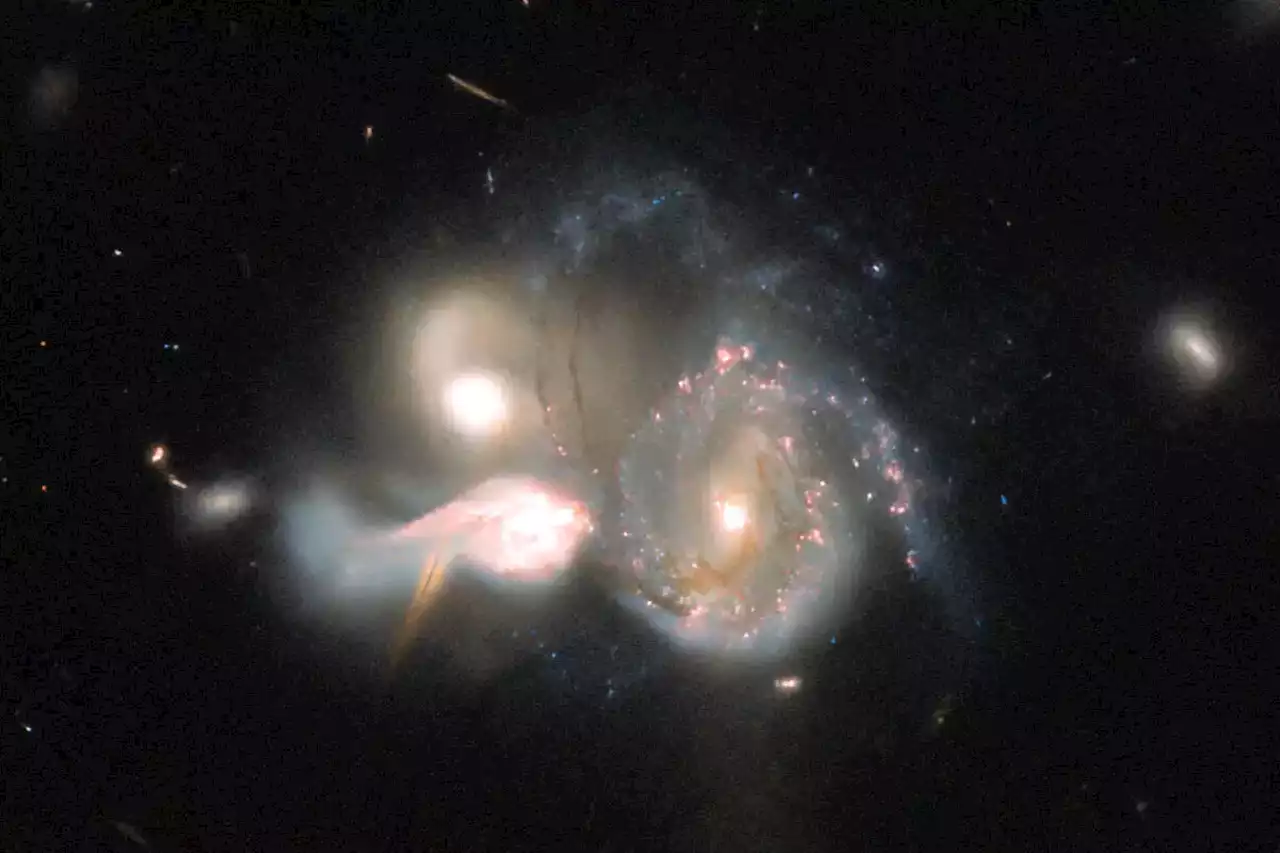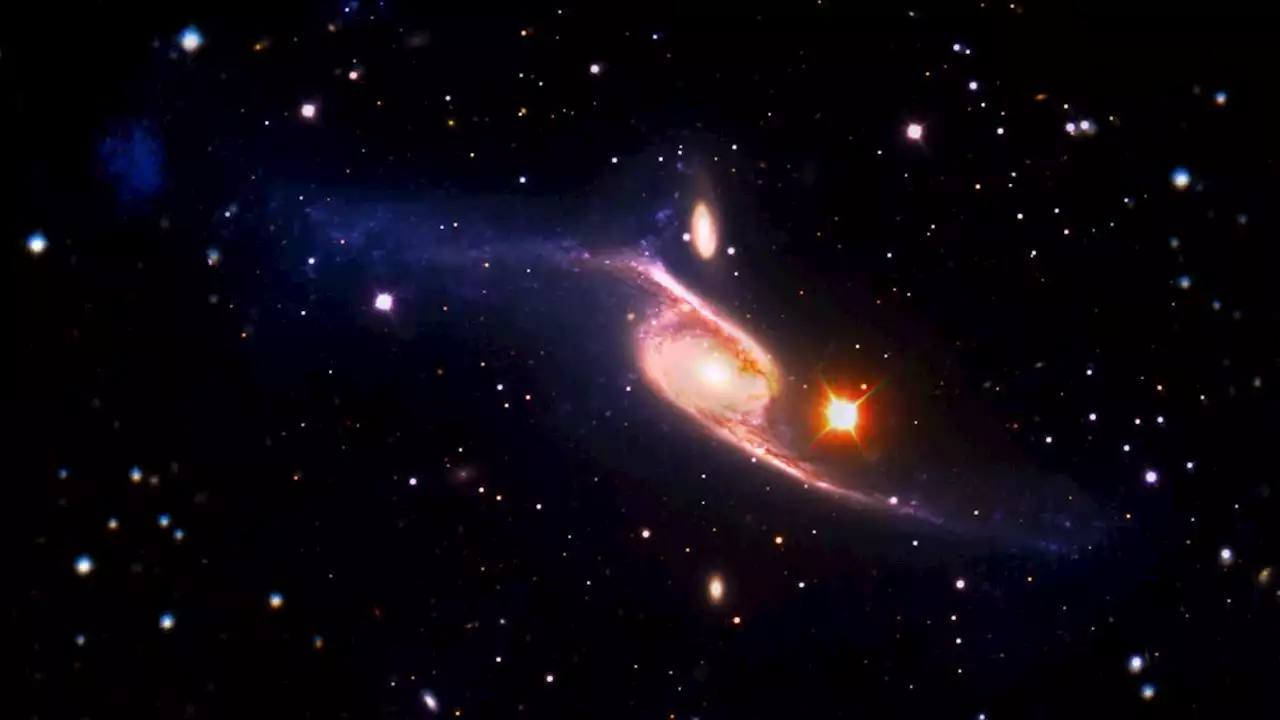Astronomers using the NASA/ESA Hubble Space Telescope have for the first time directly measured the mass of a single, isolated white dwarf star – the surviving core of a burned-out sunlike star. Researchers found that the white dwarf is 56 percent of the mass of our Sun. This agrees with earlier
star – the surviving core of a burned-out sunlike star.
The results are reported in the journal Monthly Notices of the Royal Astronomical Society. The lead author is Peter McGill, formerly of the University of Cambridge in the United Kingdom and now based at the University of California, Santa Cruz. The collapsed remains of a star that burned out 1 billion years ago, LAWD 37 has been extensively studied because it is only 15 light-years away in the constellation Musca. “Because this white dwarf is relatively close to us, we’ve got lots of data on it — we’ve got information about its spectrum of light, but the missing piece of the puzzle has been a measurement of its mass,” said McGill., which makes extraordinarily precise measurements of nearly two billion star positions.
Since the light from the background star was so faint, the main challenge for astronomers was extracting its image from the glare of the white dwarf, which is 400 times brighter than the background star. Only Hubble can make these kinds of high-contrast observations in visible light.The dwarf, called LAWD 37, is a burned-out star in the center of this Hubble Space Telescope image.
The white dwarf has a ‘spike’ because it is so bright that the light ‘bled’ into the Hubble camera’s CCD detector. This interfered with one of the observing dates for measuring that background star’s position on the sky.
United States Latest News, United States Headlines
Similar News:You can also read news stories similar to this one that we have collected from other news sources.
 The James Webb Space Telescope catches distant young galaxy devouring its neighborsThe Sparkler galaxy is feasting its neighbors just as our own galaxy once did.
The James Webb Space Telescope catches distant young galaxy devouring its neighborsThe Sparkler galaxy is feasting its neighbors just as our own galaxy once did.
Read more »
 Strange Lines Appear in Saturn's RingsNASA's Hubble Space Telescope has captured images of strange lines crossing Saturn's rings, heralding the start of the planet's 'spokes season.'
Strange Lines Appear in Saturn's RingsNASA's Hubble Space Telescope has captured images of strange lines crossing Saturn's rings, heralding the start of the planet's 'spokes season.'
Read more »
 Hubble is investigating mysterious spokes in Saturn's rings | Digital TrendsSaturn is famous for its beautiful rings, but these rings have a strange feature: spokes that appear intermittently. Now Hubble is on the case.
Hubble is investigating mysterious spokes in Saturn's rings | Digital TrendsSaturn is famous for its beautiful rings, but these rings have a strange feature: spokes that appear intermittently. Now Hubble is on the case.
Read more »
 Hubble Captures a Spectacular Triple Galactic Crash CourseA spectacular trio of merging galaxies in the constellation Boötes takes center stage in this stunning image from the Hubble Space Telescope. These three galaxies are set on a collision course and will eventually merge into a single larger galaxy, distorting one another’s spiral structure through mu
Hubble Captures a Spectacular Triple Galactic Crash CourseA spectacular trio of merging galaxies in the constellation Boötes takes center stage in this stunning image from the Hubble Space Telescope. These three galaxies are set on a collision course and will eventually merge into a single larger galaxy, distorting one another’s spiral structure through mu
Read more »
 NASA’s NuSTAR Telescope reveals beautiful hidden light shows on our SunNew images created using data from NASA's NuSTAR telescope has given humanity a glimpse at hidden lights shows on the Sun's surface.
NASA’s NuSTAR Telescope reveals beautiful hidden light shows on our SunNew images created using data from NASA's NuSTAR telescope has given humanity a glimpse at hidden lights shows on the Sun's surface.
Read more »
 Largest known spiral galaxy in the universe shines in multi-telescope imageNGC 6872 is an astonishing 522,000 light-years across.
Largest known spiral galaxy in the universe shines in multi-telescope imageNGC 6872 is an astonishing 522,000 light-years across.
Read more »
